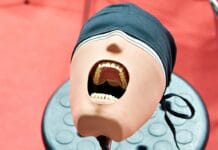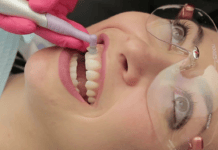Editor’s Note: This article was written by a hygienist living and licensed in Canada. Some terms may differ from those commonly used by hygienists in the United States.
Graduating from the dental hygiene program is an incredible accomplishment. However, as the celebration fades and you prepare for your first day in the real world, a wave of unexpected fear might hit you. You’ve trained for this moment in your school clinics, yet it can still feel like no one can truly prepare you enough for it.
That feeling of excitement mingled with fear and anxiety is completely normal and a sign that you care deeply about providing excellent patient care. With the right approach and guidance from team members, those fears can become your biggest strength.
Not too long ago, I began my career as a dental hygienist. I still remember the fears that filled my mind: “Would I be quick enough?” “Would I make the right clinical decisions?” “What if I did something wrong?” Or even something as silly as, “What if I forget to debride one quadrant, and the client goes home with their treatment only 75% complete?” Remember, though, all hygienists ‒ no matter how experienced ‒ were once in your shoes.
This article is for recently licensed dental hygienists who are beginning their careers full of hope and a mind full of panicked questions such as, “Is it too early to cry alone in the stock room?” Here are some tips to help you face common fears with confidence.
Fear of Not Being Able to Complete Client Care
In other words, the fear of not being fast enough. This can be the most challenging transition from school to practice. Here are some tips to help you manage your time effectively:
- Keep your operatory stocked up and prepare your client trays in advance. A typical tray setup often includes a tray liner/cover, gauze, an air/water syringe, a saliva ejector and/or a high-volume evacuator (HVE) tip, an instrument cassette, ultrasonic tips, floss, and prophy paste.
- Organize your drawers so that everything is within easy reach during client care. The most frequently used items, such as floss threaders or gauze, would be best placed in the top drawer, for example, rather than items that aren’t needed as often.
- Consider shadowing a more experienced hygienist to observe how they manage their time effectively.
- Focus on completing client care properly rather than quickly. Speed will come with experience.
Fear of Not Being Thorough
In real life, everyone makes mistakes. What matters most is how you handle and learn from them. Prepare and stay alert, but don’t let your fears overwhelm you. Here are some strategies to help you be prepared and be thorough:
- Write out a sequence of steps, much like a checklist, that need to be completed during appointments. Laminate it and place it where you can easily see it. For example, greet the client, seat the client, update medical history, take vitals, and so on.
- Arrive 30 minutes early and review client charts. Make a note of any outstanding treatment, medical alerts, allergies, or if perio charting needs to be completed. Reviewing charts ahead of time also helps with tray preparation. For instance, noting prostheses such as implants or bridges alerts you if you need implant instruments or additional interdental aids such as interproximal brushes and/or floss threaders. Planning ahead can help you focus on each client without getting overwhelmed.
- Be curious and humble, and be willing to learn more and ask for clarity when needed. You might be surprised at how much more confident and thorough you become by asking questions and continuously seeking to improve your understanding of patient care.
Fear of Challenging Clients
Every healthcare worker encounters challenging situations. Some challenges may include a client refusing radiographs, not understanding the importance of oral health and home care, or being sensitive even after local anesthesia has been administered. Dental anxiety and fear can also present difficulties. Here are some approaches when faced with challenging interactions:
- Think of some common situations, prepare talking points for how to respond, and practice them in front of a mirror.
- When communicating with clients, be confident and professional while remembering to:1
- Address their concerns
- Actively listen
- Use simple language that’s easy to understand
- Encourage questions
- Use visual aids to help increase client understanding
- Practice empathy and offer reassurance
- Take a patient-centered approach. Ask clients about their needs and preferences and gradually guide them toward what is most beneficial for them. You can share your assessment findings, discuss all the treatment options, and help them understand the risks and benefits of each.1 You may not be able to change their mind overnight, but with patience and understanding over multiple appointments, you may be able to guide them toward the most beneficial treatment choices within the bounds of the standard of care.
- Ask your team members for help. They may have encountered similar situations and can guide you on how to respond.
- Take continuing education courses in effective patient communication strategies, such as motivational interviewing.
Fear of Not Fitting In
Connecting with team members and integrating into the office helps ease the transition into your new workplace. As the newest team member, you will have to make an effort to show that you are a great fit for the team. Don’t worry too much because very dental professional was once the new kid, too. Here are some tips for fitting in:
- Proactively learn office protocols and stay organized in clinical and administrative tasks.
- Show your professionalism by adhering to the Standards for Clinical Dental Hygiene Practice and best practices.2
- Avoid engaging in office gossip. If you feel uncomfortable with certain conversations or situations, speak with your employer.
- You may not click with everyone right away, but that’s alright. Just be professional, respectful, and willing to support and assist your team members. You’ll be surprised how much you can learn by just helping your colleagues.
In Closing
Starting your first position as a registered dental hygienist may feel overwhelming. The fears you might be feeling are all part of the transition. Getting lost in the practice management software while trying to perio chart, forgetting which way to orient the x-ray sensor, or accidentally giving a patient a mini facial with the ultrasonic are all totally normal.
No one expects you to be perfect fresh out of school, but your personality, professionalism, compassion for clients, and willingness to learn are what matters. Every awkward moment and every funny client encounter is all part of leveling up. With time and experience, you will only get better – it’s the natural progression.
You will never magically forget how to hold a scaler (we hope!). Just remember, it’s not about being perfect, but about being a little better than you were yesterday.
Before you leave, check out the Today’s RDH self-study CE courses. All courses are peer-reviewed and non-sponsored to focus solely on high-quality education. Click here now.
Listen to the Today’s RDH Dental Hygiene Podcast Below:
References
- Ho, J.C.Y., Chai, H.H., Lo, E.C.M., et al. Strategies for Effective Dentist-Patient Communication: A Literature Review. Patient Prefer Adherence. 2024; 18: 1385-1394. https://pmc.ncbi.nlm.nih.gov/articles/PMC11225999/
- Standards for Clinical Dental Hygiene Practice. (2025, March). American Dental Hygienists’ Association. https://www.adha.org/wp-content/uploads/2025/03/2025_Standards-of-Dental-Hygiene-Practice.pdf












